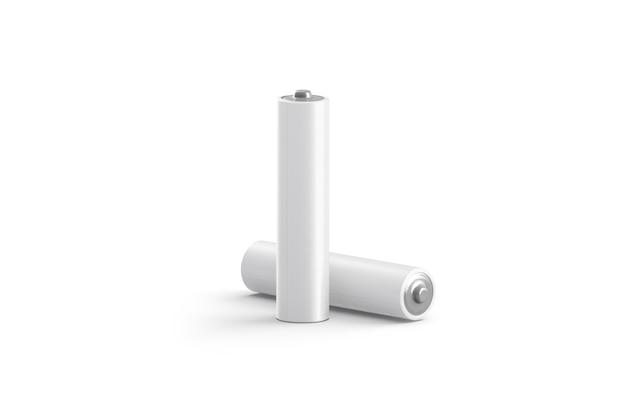Are you tired of your old and inefficient gravity furnace? Are you wondering if it’s time to replace it with a more energy-efficient option? If so, this blog post is for you. In this article, we will discuss the pros and cons of gravity furnaces, how to remove one safely, and the cost of replacement.
Firstly, let’s discuss the current state of the market for gravity furnaces. While they were once a popular option, these days they’re rarely manufactured, and finding a new one on the market can be challenging. So, if you’ve got a working gravity furnace, you might be lucky enough to have a unique piece of equipment in your home.
However, even if your gravity furnace still works, it might be wise to consider upgrading for a more efficient model. One of the main challenges with gravity furnaces is their lack of energy efficiency. This can significantly increase your energy bills and leave you feeling like you’re paying to heat the whole neighborhood.
But don’t worry; you’re not stuck with your old furnace forever. In this post, we’ll cover all the steps you need to take to safely remove your old gravity furnace and replace it with a more efficient option.
Before we dive into the details, let’s start by discussing the pros and cons of gravity furnaces and answering some common questions. Do all gravity furnaces have asbestos? Are they still a good heating option? We’ve got you covered. Keep reading to learn more.
Replacing Gravity Furnace: What You Need To Know
If you own a house with a furnace, you are likely aware that there are different types of furnace installations. If you have an older house, you might be using a gravity furnace for heating. Gravity furnaces are typically installed in older homes and are known for their reliability.
However, if you find your gravity furnace not keeping up with your home’s heating needs, it might be time to consider upgrading to a more efficient furnace. In this subsection, we’ll talk about why you should replace your gravity furnace and factors to consider when choosing a new furnace.
Why Replace Your Gravity Furnace
Gravity furnaces are typically made of metal and work by circulating heated air throughout the house by natural convection – the hot air rises while the cooler air sinks. While they are known to be durable and reliable, gravity furnaces are not very efficient, and older units may pose safety hazards.
Factors To Consider When Replacing Your Gravity Furnace
1. Type of Furnace
When replacing your gravity furnace, you’ll need to decide on the type of furnace you want. The most common types of furnaces today are gas and electric furnaces. Gas furnaces tend to be more efficient than electric furnaces but require a gas line. If you don’t have a gas line or don’t want to install one, an electric furnace may be a better choice.
2. Size of Furnace
Getting the right size furnace is critical for optimal efficiency. If your furnace is too small, it won’t generate enough heat to keep your home warm, and if it’s too large, it will waste energy and increase your energy bills. A professional HVAC technician can help you determine the right size furnace for your home.
3. Energy Efficiency
Older gravity furnaces are not very efficient and can be expensive to run. When choosing a new furnace, look for a model with a high Annual Fuel Utilization Efficiency (AFUE) rating. The higher the AFUE rating, the more efficient the furnace will be.
4. Cost
Replacing a furnace can be expensive, so it’s essential to consider the cost when choosing a new furnace. The cost of the furnace will depend on the type, size, and energy efficiency rating. Keep in mind that a more efficient furnace might cost more upfront, but it will save you money in the long run by reducing your energy bills.
Replacing an old gravity furnace can improve your home’s heating efficiency and safety. When choosing a new furnace, consider the type, size, energy efficiency, and cost to make an informed decision. A professional HVAC technician can help you choose the right furnace for your home and ensure proper installation.
Gravity Furnace for Sale
If you’re in the market for a new heating system, have you considered purchasing a gravity furnace? Not only are these units incredibly efficient, but they’re also incredibly affordable, making them an ideal choice for those on a budget.
What is a Gravity Furnace
A gravity furnace is a type of heating system that relies on hot air rising and cold air sinking. As the name suggests, the system uses gravity to distribute heat throughout your home. The unit is typically installed in the basement or crawl space of your home and uses a series of ducts to deliver warm air to the rest of your house.
Why Choose a Gravity Furnace
There are many reasons why you might choose a gravity furnace for your home. For starters, these units are incredibly reliable and require very little maintenance. They’re also very affordable, making them a great choice for homeowners on a budget.
Where to Find Gravity Furnaces for Sale
If you’re interested in purchasing a gravity furnace for your home, there are several options available to you. You can check online retailers, local home improvement stores, or even reach out to HVAC contractors in your area.
Overall, a gravity furnace can be an excellent choice for homeowners in need of a new heating system. Not only are they affordable and efficient, but they’re also incredibly reliable and require very little maintenance. If you’re interested in purchasing a gravity furnace for your home, be sure to do your research and choose a reputable brand and installer.
Are Gravity Furnaces Good
When considering whether or not to invest in a gravity furnace, one of the biggest questions is whether or not they are good. While gravity furnaces can be a reliable and efficient source of heat, there are some factors to keep in mind.
Age
One of the biggest factors affecting the performance of a gravity furnace is its age. While these furnaces were once popular and very common, they are now outdated and may not perform as well as modern heating systems. If you are considering purchasing a gravity furnace, be sure to check its age and maintenance history.
Efficiency
Gravity furnaces may not be as efficient as modern heating systems. They rely on gravity to distribute warm air throughout your home, which means that they may not heat your home as evenly and consistently as a forced-air heating system. Additionally, gravity furnaces may be less efficient at converting fuel into heat, which can lead to higher heating costs.
Upkeep
Another important aspect to consider when it comes to the performance of a gravity furnace is its upkeep. These furnaces require regular maintenance and inspection to ensure that they are running properly. If you neglect this upkeep, you may encounter issues such as uneven heating, poor air quality, or even carbon monoxide leaks.
In conclusion, gravity furnaces can be good sources of heat, but there are some factors to keep in mind. To make an informed decision, it is important to weigh the age, efficiency, and upkeep required for a gravity furnace. If you are considering investing in a gravity furnace, be sure to speak with a professional to determine whether or not it is the best fit for your home.
Gravity Furnace Pros and Cons
So, you’ve read our previous article on replacing your gravity furnace. Now, we’ll be shedding some light on the perks and downsides of having a gravity furnace.
Pros
-
Inexpensive: When it comes to upfront costs, gravity furnaces are cheap to install. They operate by utilizing natural gas or fuel oil and do not require electricity to run.
-
Simple Design: Gravity furnaces possess no complicated moving parts, implying that they are durable and robust. This feature makes them easy to maintain, and repair costs are usually low.
-
Provides Heat during Power Outages: Since gravity furnaces do not rely on electricity to run, they can keep your house warm when there’s a power outage. This is extremely useful if you live in areas prone to winter blackouts.
-
Uniform Heat: Gravity furnaces heat up a room evenly, and the warmth or heat quality does not vary. They are ideal for persons who love a consistent temperature throughout their home.
Cons
-
Safety Hazard: Gravity furnaces are old-fashioned systems, and some may not conform to modern safety regulations. They are prone to carbon monoxide leaks, making them unsafe, mainly if you have poor or no ventilation.
-
Inefficient: Gravity furnaces have low energy efficiency. They need to run at full capacity to provide warmth, and this makes them inadequate if you want to save energy.
-
Noisy Operation: Gravity furnace’s operation can be noisy as they emit loud sounds when in use. This can be an annoyance and may disturb your sleep, especially when the unit is situated near a bedroom or study room.
-
Difficult to Control Temperature: Gravity furnaces can be challenging to manage and control temperature-wise. They lack thermostats to regulate heat output, which makes it almost impossible to make adjustments according to your preferences.
Now that you’ve seen both sides of the coin, keep in mind that if your decision is leaning towards getting rid of your gravity furnace, be sure to hire a licensed professional for proper disposal or replacement.
How to Safely Remove Your Old Gravity Furnace
Gravity furnaces were once the gold standard for home heating systems. However, for most homeowners, it is now time to bid them goodbye and move to more energy-efficient HVAC systems. But before you install that new shiny furnace, you need to remove your old gravity furnace safely. Here are some tips to help you get the job done.
Turn Off the Power
Before you start disassembling your old gravity furnace, turn off the power. Switch off the breaker that powers the furnace, then unplug it from the socket. This ensures that no electricity passes through the furnace when removing it, preventing any accidents.
Disconnect the Gas and Oil Line
Before you start removing the furnace, you need to turn off the gas or oil valve that feeds it. This prevents gas or oil from leaking out when you remove the furnace. You may need to hire a licensed plumber to help you remove this part of the furnace.
Remove the Furnace
Removing the furnace might be a bit of a challenge, mainly because the furnace is massive and unwieldy. You could choose to take it apart piece by piece or get help from an expert. Most licensed HVAC technicians are familiar with the process of removing gravity furnaces and can help you remove your furnace for free or a small fee.
Clean Up After Removal
After removing the furnace, you need to clean up the surrounding area to remove any debris or dents caused by removing the furnace. This is especially important if you plan to install a new furnace. You should also ensure that you are staying safe, as some debris may be sharp or hazardous. Before you start removing anything, make sure you have the right protective gear such as gloves, goggles, or even a face mask.
Removing an old gravity furnace might seem daunting, but with the right equipment and professional support, you can safely get rid of your old furnace to install a modern and efficient HVAC system. Now that you’ve safely removed your old furnace, you can focus on getting a modern furnace such as gas-fired furnaces or a heat pump. Remember to choose an HVAC system that will help you save energy and money in the long run, which means you’ll have a comfortable home and a smaller carbon footprint.
Are Gravity Furnaces Still Made
If you’re wondering whether gravity furnaces can still be found, the answer is yes. Despite being an old technology, gravity furnaces are still being made today.
A Brief History of Gravity Furnaces
Gravity furnaces were first introduced in the 1880s and were a popular choice for home heating until the 1950s. These furnaces used the natural flow of hot air, which rises and cold air, which falls to circulate air throughout the home.
Modern Gravity Furnaces
Nowadays, modern gravity furnaces are manufactured with more significant safety features and are much more energy-efficient than their predecessors. They’re equipped with an electronic ignition system, which eliminates the need for a pilot light, making them safer.
Advantages of Gravity Furnaces
Gravity furnaces have a few advantages over their forced-air counterparts. Firstly, they don’t require ductwork, making them easier and cheaper to install. Secondly, they operate silently, which can be a real plus if you’re sensitive to noise.
Disadvantages of Gravity Furnaces
On the downside, gravity furnaces are not as energy-efficient as other options, meaning they can drive up energy bills. They can also be expensive to repair if something goes wrong.
All in all, gravity furnaces are still being made today and remain a viable option for heating homes. While there are modern models that incorporate many improvements, they do have some drawbacks. If you’re considering a gravity furnace, do your research, and speak with an HVAC professional to determine if it’s the right fit for your home.
Cost of Replacing Gravity Furnace
You may be wondering how much it would cost to replace your old-fashioned gravity furnace with a modern, more efficient system. Well, there’s no simple answer since the exact cost will depend on several factors. Here are a few things to consider:
Size of the House
The size of your house plays a significant role in determining the cost of replacing a gravity furnace. If you have a larger home, you’ll need a bigger furnace that costs more money. A professional can help you estimate the right size of the furnace that will adequately heat your home.
Efficiency Level
Newer furnaces are more efficient, which means they use less energy to produce heat. More efficient furnaces come with a higher price tag, but they will save you money in the long run with lower energy bills. It’s important to think about the long-term savings when considering the cost of replacing your gravity furnace.
Type of Furnace
The type of furnace you choose will also impact the cost of replacing your gravity furnace. Some newer heating systems have a higher upfront cost but offer greater energy efficiency. An HVAC technician can help you determine the best type of furnace for your home and budget.
Installation Cost
Along with the cost of the furnace itself, you also have to consider the cost of installation. This includes labor costs, permits, and any necessary upgrades to your home’s ductwork or ventilation system.
The cost of replacing a gravity furnace varies depending on several factors, including the size of your home, the efficiency level you want, the type of furnace, and installation costs. While there is no one-size-fits-all answer, it’s worth investing in a more efficient furnace that will save you money on energy bills in the long run. Be sure to consult with a professional to make the process as smooth and cost-effective as possible.
How Efficient is a Gravity Furnace
If you are considering switching to a gravity furnace, you are probably wondering just how efficient this type of furnace is. After all, energy efficiency is key to reducing your monthly energy bills, your carbon footprint, and living comfortably in your home.
How Do Gravity Furnaces Work
Gravity furnaces are a type of furnace that relies on the natural circulation of warm air to heat your home. The furnace is usually located in the basement and relies on the convection of air to distribute heat. It doesn’t rely on a fan or blower to distribute the heat, unlike modern furnaces.
Gravity furnaces work by pulling cold air from the room through a duct and into the furnace. The air is then heated by the furnace, which warms it up to the desired temperature. The warm air rises out of the furnace through the ducts and is distributed throughout the house.
How Efficient Are Gravity Furnaces
When compared to modern furnaces, gravity furnaces are significantly less efficient. Their efficiency rating is around 50-65%, while a modern furnace can have an efficiency rating of up to 98%. The main reason for this is the lack of a fan to distribute the heat. This leads to uneven temperatures in different parts of the house.
While gravity furnaces are less efficient than modern furnaces, they do have some benefits. They are quite durable and can last for more than 30 years with proper maintenance. Moreover, gravity furnaces are cost-effective to install and have relatively low operating costs as compared to modern furnaces. They also operate silently and do not require any electricity to run.
Should You Switch to a Gravity Furnace
The decision to switch to a gravity furnace depends on several factors, including the age of your current furnace, the size of your home, and your budget. If you are looking to reduce your energy bills and increase your home’s energy efficiency, then a modern furnace is a better option.
However, if you live in a small to the mid-size house and are considering a furnace that lasts longer,then a gravity furnace might be a good option. It’s not suitable for large homes or in areas that have extreme winter temperatures.
In conclusion, while gravity furnaces have some benefits, they are not the most energy-efficient option for heating. To ensure maximum energy efficiency and comfort, consider installing a modern furnace.
Do All Gravity Furnaces Have Asbestos
If you’re looking to upgrade your heating system, you might be curious about whether or not your old gravity furnace contains asbestos. The truth is, not all gravity furnaces contain asbestos, but it’s important to know what to look for if you’re concerned.
Understanding Asbestos
Asbestos is a naturally occurring mineral that was widely used in building materials until the 1970s. It was popular because of its durability, fire resistance, and insulation properties. However, it was later discovered that asbestos fibers are incredibly harmful to human health. When inhaled, these tiny fibers can cause a range of serious lung diseases, including asbestosis and mesothelioma.
Do Gravity Furnaces Contain Asbestos
While not all gravity furnaces contain asbestos, it’s true that many of them do. Most gravity furnaces were installed before the 1970s, which means they may contain asbestos-based insulation. This insulation was often used to wrap the furnace, the ductwork, and the pipes, as well as to seal any gaps or cracks in the system.
Testing for Asbestos
If you’re unsure whether or not your gravity furnace contains asbestos, it’s important to have it tested. You can hire a professional asbestos testing company to take samples of the insulation and send them to a lab for analysis. If the lab confirms that your furnace does contain asbestos, you’ll need to have it removed by a professional asbestos abatement contractor.
In conclusion, not all gravity furnaces contain asbestos, but it’s still important to be mindful of the potential risks if you have an older heating system. If you’re concerned about asbestos exposure, have your furnace tested by a professional and take the necessary steps to address any issues. By doing so, you can ensure the safety and comfort of your home for years to come.



